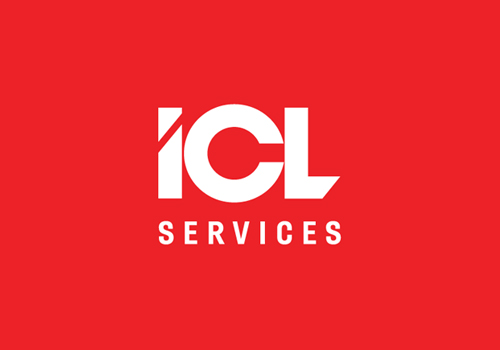Готово!
Скоро материал придет на указанную электронную почту. Также подписывайте на нас в Facebook
Ok
Cyber threats to business and how to protect yourself
When digital technology permeates every aspect of business, cyber threats have to be taken seriously. Subverting digital technology, cyberattacks can lead to serious consequences: financial and reputational loss, disruption of business, fines, and leaks of confidential information. Cyberattacks grow more sophisticated as digitalization expands. At this juncture, understanding the nature of the risks and taking powerful defensive action is no longer just a recommendation; it's a categorical imperative for any business wishing to remain robust and competitive.
We asked Aleksey Morozkov, head of the Cybersecurity Management Center at ICL Services, to explain how businesses can counter cyber threats and minimize risks.
Types of risks
Some of the more common threats to information security are infrastructure hacking, malware and spyware, DDoS attacks, and software/hardware vulnerabilities. Malware can block access to data, steal or erase it, phishing may cause leaks of classified information or infrastructure breaches, and a DDoS attack can overload the servers, halting the operation of web applications and services. Malicious users manipulate software or hardware vulnerabilities to find weaknesses in order to gain unauthorized access to infrastructure and applications.
Penetrating the IT infrastructure, the intruder breaches the company’s information security, which is fraught with adverse reputational and legal implications, as well as financial loss.
Implications of not having cyber safeguards in place
If we take a look at how most businesses incur financial losses, we will see that in most cases, theft of funds occurs through hacked bank accounts, fraudulent transactions, or extortion. Companies may incur penalties and legal costs on top of direct loss. They also have to pay for post-attack recovery and infrastructure updates. Colonial Pipeline was targeted by a ransomware attack in 2021, paying US $4.4 million in ransom and suffering major loss due to the fuel supply disruption. The 2017 Equifax data breach affecting 147 million people cost the company $1.4 billion, including fines, settlements, and legal fees.
Alongside financial loss come legal consequences, putting the company's reputation on the line. Its clients and partners may sue. All this attracts negative media attention with ruinous implications for the company’s image. Loss of confidence and accelerated customer churn are not too far behind. It may take the company years and untold sums to restore its good name.
In the normal course of business, a critical disruption of core business processes may entail catastrophic consequences, such as production downtime. A DDoS or ransomware attack can paralyze the entire suite of systems, web applications and production processes.
Trade secrets, know-how, patent rights, and other intellectual property is targeted by malefactors who can easily gain access to sensitive data. And in the end, the business loses its competitive clout and starts losing customers. A leak of R&D project data is liable to render R&D investments completely useless.
Not every company has what it takes to recover from an attack, restoring its infrastructure and reputation. A small or medium-sized business may find that the impact of a cyberattack surpasses the company’s financial and operational capabilities of recovery.
Preventing cyberattacks always costs less than dealing with the aftermath of one. Basic preventive action such as employee education, backup, MFA and software updates can often help reduce cyber risks, while outsourcing some data security functions will save the company massive payroll, equipment, and license expenses. A business ignoring cybersecurity puts not only its finances but its very existence on the line.
Action to counter cyber threats and reduce risk exposure
1. Regular software and security system updates will help identify weaknesses proactively and eliminate them by upgrading the protective apparatus, which may include new algorithms for encryption, authentication, and countering cyberattacks. Updates also make sure the system stays up to date in terms of current security standards. They help to maintain compatibility with new protocols and compliance with new regulatory requirements.
2. Raising staff awareness in matters of cybersecurity. This is an evergreen cybersecurity trend often neglected by companies. By reading the internal policies, procedures and guidelines on how confidential information is supposed to be stored and processed, you learn to proactively safeguard sensitive data against encroachments by malicious actors. Forewarned is forearmed!
3. It is advisable to use antivirus software, firewalls, and intrusion prevention systems.
Together, they form a multi-layered defense structure securely protecting your business against hack attacks. An intruder penetrating the first defensive line may be stopped by further protective capabilities. For example, a firewall can block suspicious connections, antivirus software can neutralize malware files, and an IPS can thwart attempts to exploit a new vulnerability.
4. Data backup and implementation of multi-factor authentication. Backup serves as an alternative for keeping corporate data safe in the event of a cyberattack. When you make backup copies, your data will never be lost completely - it will be preserved on the alternative storage media. Multi-factor authentication adds another line of defense to account protection. If the password gets stolen, the intruder will then need a second credential (SMS code, biometrics, or hardware key) to gain access. This often presents a significant obstacle for hackers.
5. Security audits and pen testing are further proactive measures helping to expose security gaps in the company’s infrastructure. The purpose of IT infrastructure testing is to audit the security of all IT resources and assets that may come under attack from outside the company (external network addresses, servers, network services) or from inside (back-end servers, workstations, network and other devices inside the IT infrastructure).
6. To outsource your information security means to let some of your data security functions, processes, or projects be managed by another entity. You may outsource an isolated project like building a data protection system, an audit or a pen test, or you may outsource regular services: firewall and antivirus protection management, or something more advanced like a SOC, the dedicated team tasked with cyber threat detection and response. One information security outsourcing option is known as Managed Security Services. That's when the company contracts a service provider to maintain a high service level by following the provisions of the SLA and watching the key metrics.
Outsourcing information security
It pays off in many ways to outsource your IT security. Here are some of them:
1. Expertise access:
External consultants and outsourcing contractors often possess deeper insights and experience in specific areas of information security than the in-house team.
2. A wide range of services: Outsourcing contractors offer a broad spectrum of services, including security audits, threat monitoring, incident management and incident response. This can be too much for a company to accomplish on its own in the absence of qualified staff and technology.
3. Saves time and resources: The implementation and support of cybersecurity systems requires a significant effort, competence, and budget. Outsourcing allows the internal teams to focus on strategically important tasks rather than operational routines.
4. Cost reduction:
It may cost a bundle to educate your staff and purchase expensive software and technology. Outsourcing helps avoid these expenses as many services are available by subscription, and furthermore, companies end up budgeting for predictable cybersecurity costs.
5. Flexibility and scalability: Outsourcing contractors know how to promptly adapt to changing business needs by scaling their services up or down as the situation dictates.
6. Independent audit and risk assessment: External consultants can offer an impartial perspective on the company’s security level and help identify vulnerabilities that may have escaped the attention of in-house teams.
7. Access to advanced technology: Outsourcing contractors often have access to sophisticated tools and technologies that may be too expensive or complex for the company to implement internally.
8. Regulatory compliance: Regulators get more uptight on security with every passing year. Cybersecurity outsourcing contractors keep track of all the applicable information security standards and help their customers remain in compliance by offering new IT solutions and services without any labor input on the customer's side.
At the end of the day, by outsourcing its cybersecurity functions, the company gets a chance to upgrade its data protection and other systems by gaining access to expertise and resources that may otherwise not be available to its in-house teams.
Conclusion
For many businesses, particularly small and medium ones, a cyberattack may have catastrophic consequences. Cyber threat prevention is the key to survival in today’s digital world.Stay informed
Subscribe to our newsletter and keep up with our latest news

